Fast-growing ground cover plants – 12 ideas for colorful and quick coverage
If you have bare patches of soil, you won't have to wait long to see these plants spring into life

Rachel Bull

Nature does fast-growing ground cover plants very well. Look at any large area of woodland, rainforest, open country or dry terrain and you will see colonies of plants at your feet. They often form large spreading groups and look amazing growing en masse, greening up the bare soil.
In the backyard, using ground cover plants is often seen as a practical solution for managing weeds and preventing soil erosion in larger areas. But it’s also an essential design tool that will lend your garden a soft, natural beauty, even those that may appear boring like Soleirolia soleirolii.
By using low lying plants and fast-growing plants, you can create a visual thread in your planting with layers of color and texture at different heights. Use plants for color contrast or a single color theme. You might try white flowering, silver-leaved lamium beneath a magnolia, amelanchier or a Cornus kousa for a cool, elegant combination.

12 fast-growing ground cover plants for instant greenery
Many fast-growing ground cover plants are quite tough, vigorous growers that don’t need much maintenance. You might only have to cut them back, split and divide them if they get too dense or find their way into unwanted areas.
There are many benefits of ground cover plants, but the holy grail is evergreen foliage for year-round effect. Here we have curated a list of the fastest-growing, spreading ground cover plants to give you instant cover.
1. Erigeron karvinskianus (Mexican daisy)
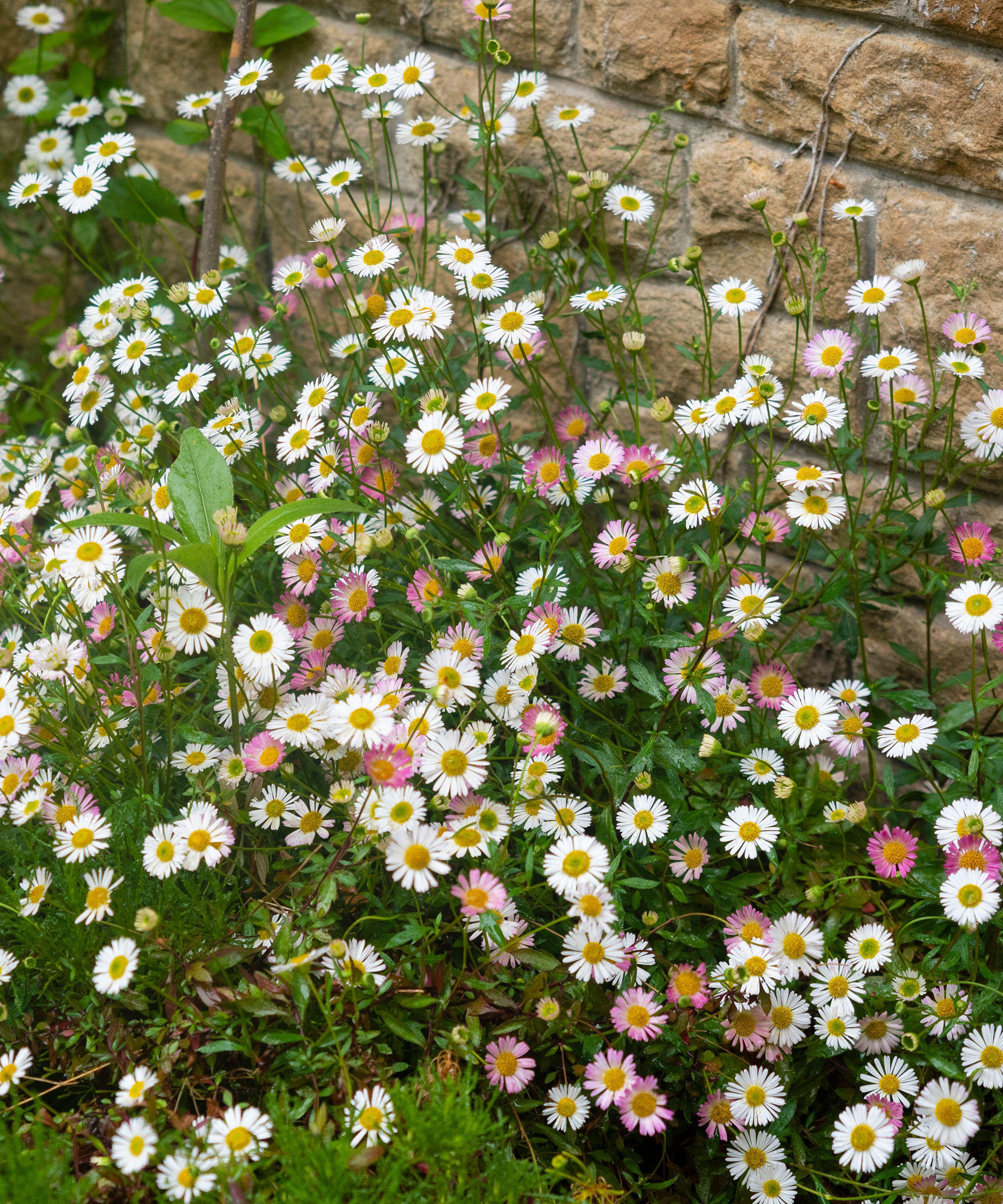
Mexican fleabane is suited to wilder, more natural planting schemes
- Best for: Rocky, dry areas
- Height: 2ft
- Spread: 5ft
- Hardiness: USDA 6-9
The Mexican fleabane spreads in frothy, mounded hummocks and will happily find its way into crevices in rocks, walls, steps and garden paths. It’s real boon for the summer garden, withstanding dry conditions and producing a seemingly never-ending supply of tiny daisy flowers from early summer into late fall.
It’s great for filling gaps and softening hard backyard landscaping features, but it spreads easily and can be a bit of an invasive plant. It lends itself to a slightly rewilded look so is not a good choice for formal gardens. Foliage will die back in harsher winter conditions, but it is a pretty sturdy plant and always returns.
Design expertise in your inbox – from inspiring decorating ideas and beautiful celebrity homes to practical gardening advice and shopping round-ups.
2. Lamium maculatum
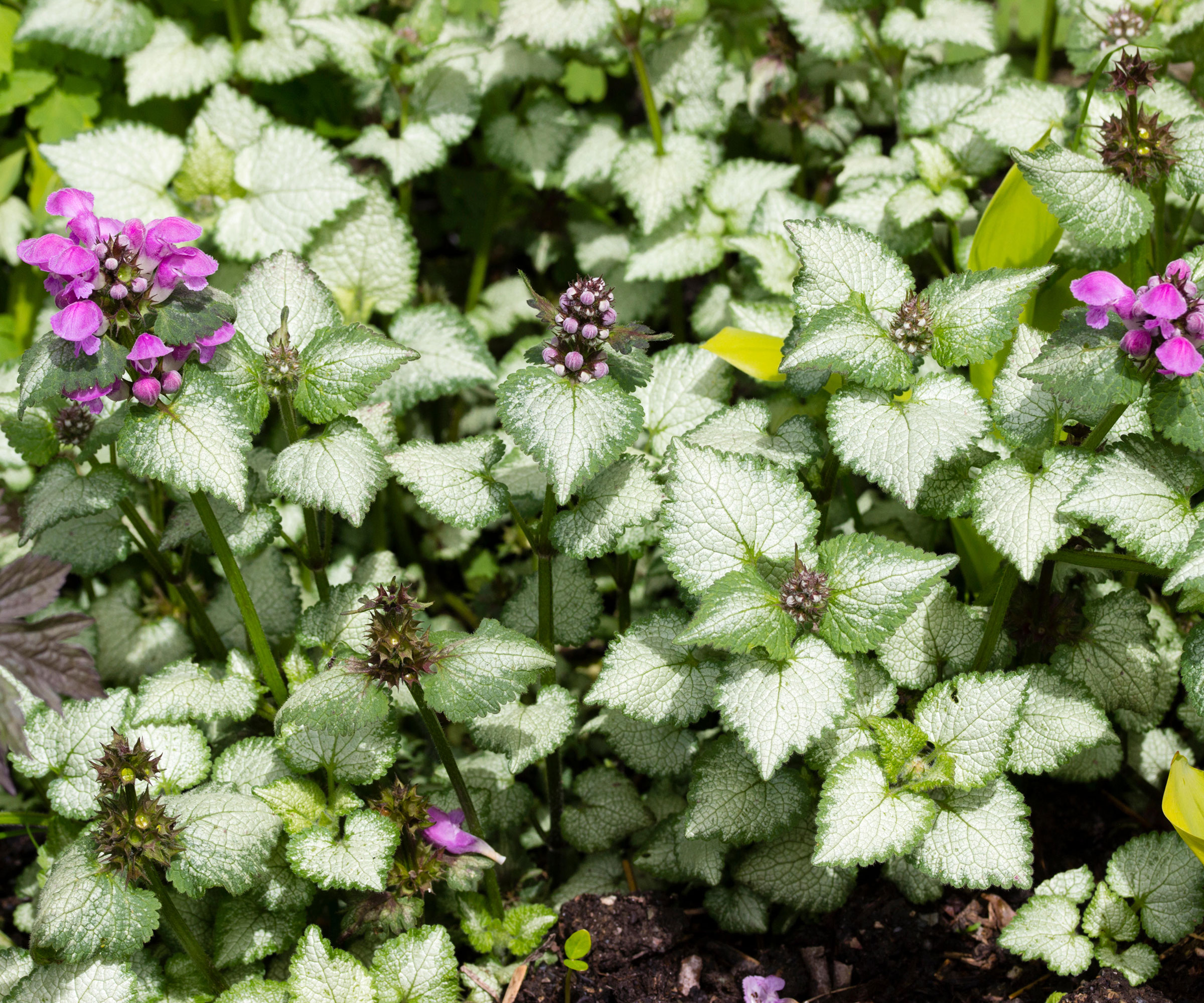
- Best for: Dry, shady corners, underplanting shrubs and trees
- Height: 12in
- Spread: 12in
- Hardiness: USDA 3-8
This is a form of variegated dead nettle that makes a great, decorative, spreading foliage plant, with small white or purple summer flowers. It spreads quickly via root runners, so it’s good where you have a larger area that needs coverage. Do be aware that it might become invasive in small backyards.
Plant among other shade-loving plants such as ferns and grasses for contrast. It’s a very low-maintenance plant, and good for drought-tolerant planting too. You can encourage a second flush of flowers by cutting back, and in milder areas plants will hold onto the foliage through the winter.
Shop Lamium maculatum plants in a range of colors at Nature Hills.
3. Phlox subulata (Creeping phlox)

Creeping phlox will quickly spread to create a carpet of pretty flowers
- Best for: Slopes and rock gardens
- Height: 4in
- Spread: 16in
- Hardiness: USDA 3-9
A native north American perennial, Phlox subulata is also known as moss phlox or creeping phlox and brings a carpet of spring flowers to sunny areas.
Spectacular planted en masse, it’s a fast-growing, mat-forming evergreen that’s tough as well as beautiful. It’s notable for its drought tolerance, deer resistance and its capacity to colonise larger areas as a spreading ground cover, thereby preventing soil erosion.
There are many cultivars to choose from white through purple and magenta. The vibrant pink flowers of Phlox subulata ‘McDaniels Cushion’ have won an RHS Award of Garden Merit, while the 'Emerald Blue' variety from Fast Growing Trees features pretty purple flowers.
4. Bugleweed (Ajuga reptans)
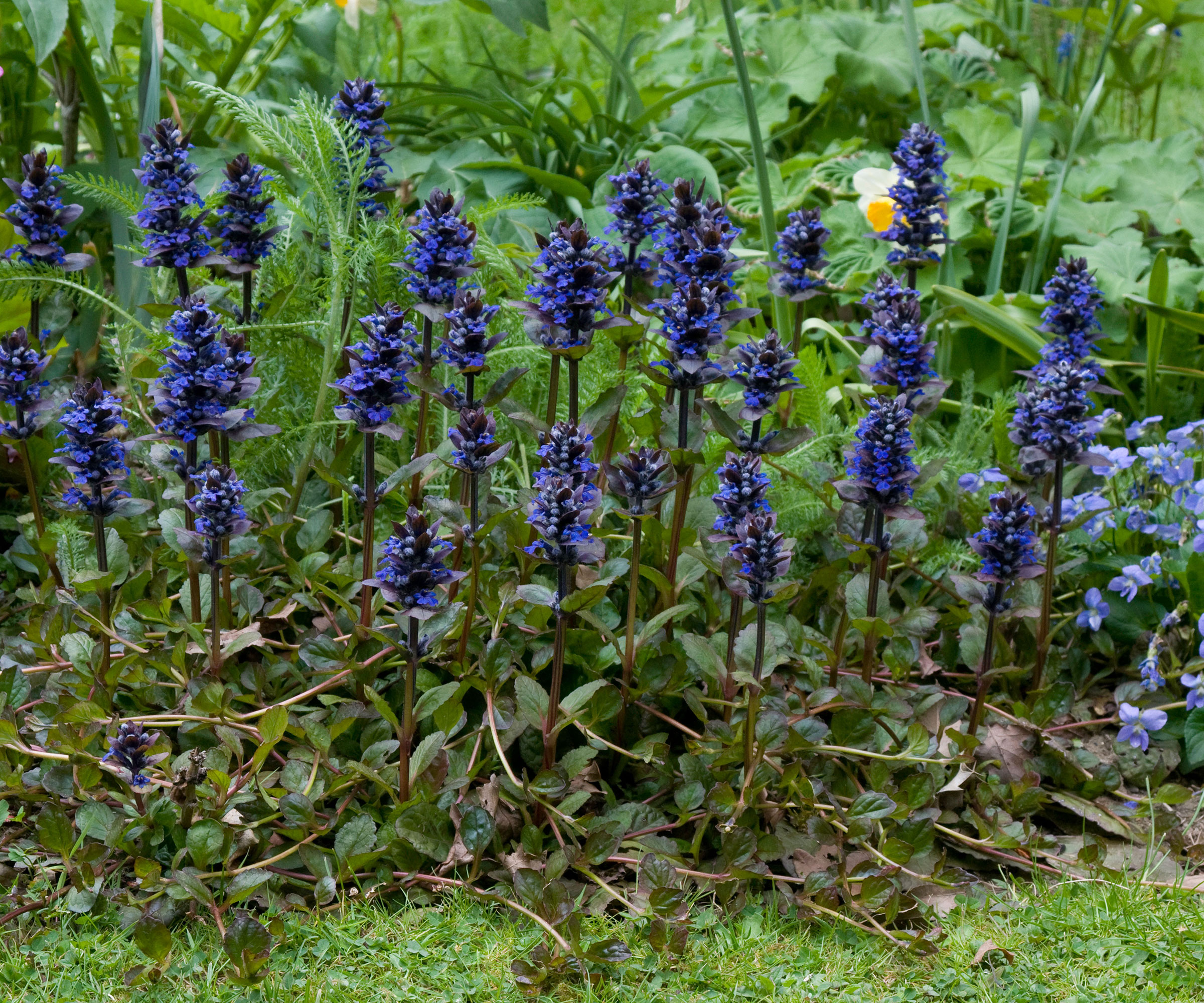
Ajuga reptans 'Catlin's Giant'
- Best for: Light shade
- Height: 6in
- Spread: 18in
- Hardiness: USDA 4-10
A fantastic choice for shadier areas at the front of borders, this evergreen creeping perennial with dark, aubergine colored, textured foliage makes a great mat-forming ground cover.
Punctuated with upright bright purple blue flowers in late spring and early summer, it’s reliable, hardy and fast growing. It will spread to combine well with brighter, shade-tolerant plants for contrast such as Carex elata ‘Aurea’.
Variations include larger leaved types such as ‘Black Scallop’ (available at Nature Hills) and ‘Catlin’s Giant’ (also from Nature Hills) or variegated ‘Burgundy Glow’.
5. Geraniums

Geranium sanguineum is a hardy, low maintenance choice for ground cover
- Best for: Front of sunny borders
- Height: 18in
- Spread: 24in
- Hardiness: USDA 4-8
There are many great hardy geranium varieties to choose from that will add color and texture to your yard. The smaller leaved G. sanguineum is a great choice for areas at the front of borders. The leaves are deeply cut leaves and topped by small flowers, in early summer. Variations are from pale pink to white. Cutting back will prompt a second bloom later on.
Good low lying plants for drought tolerance once established and an ideal plant for pollinators too.
The popular Geranium 'Rozanne' is available from Fast Growing Trees, or opt for the pretty hot pink blooms of Geranium sanguineum 'Max Frei' from Nature Hills.
6. Sweet Woodruff (Gallium odoratum)
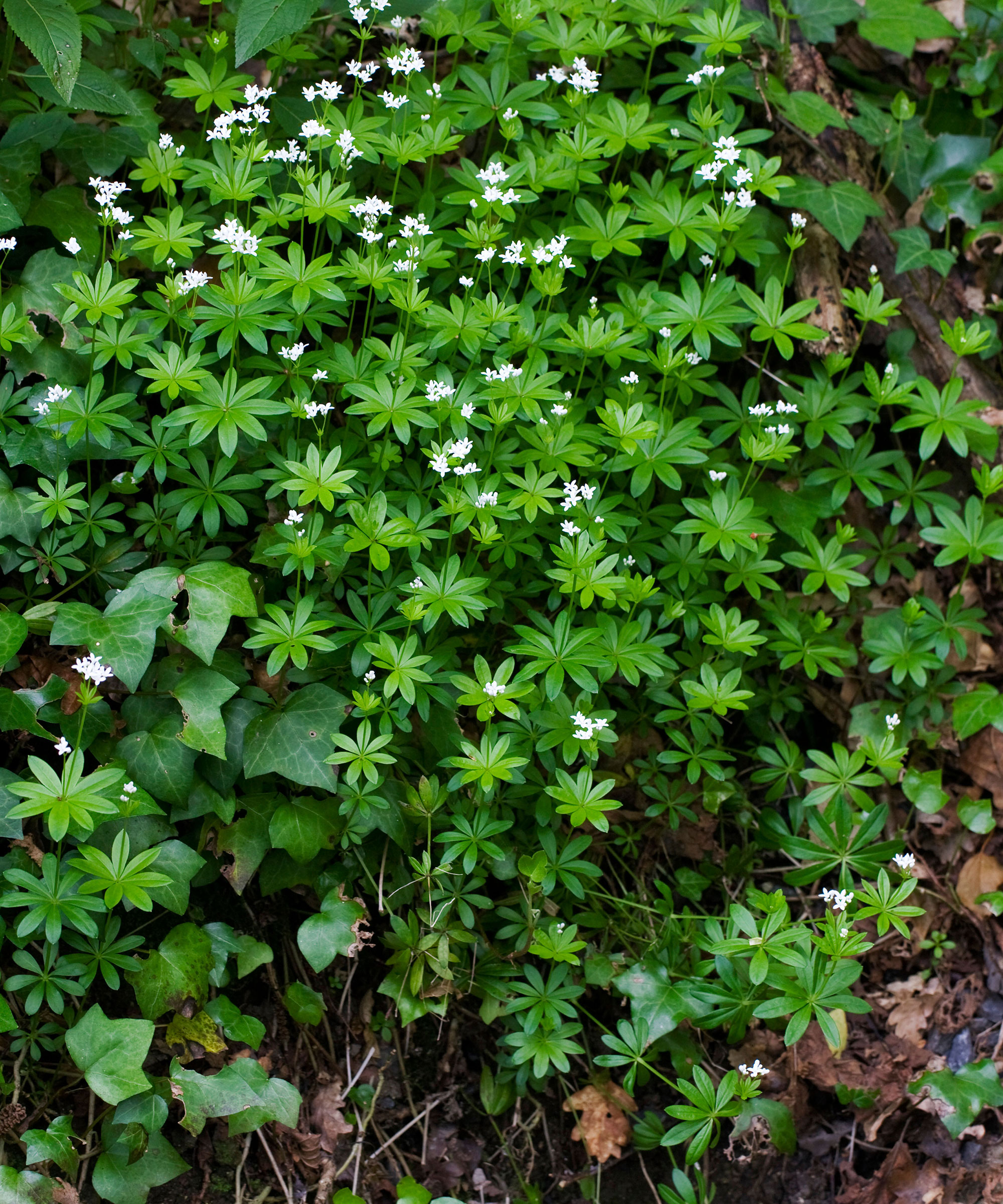
- Best for: Shady, woodland style planting
- Height: 12in
- Spread: 12in
- Hardiness: USDA 4-9
This pretty woodland plant will grow quickly in semi-shade, and Gallium odoratum (available from Nature Hills) will quickly colonise the right spot, with spreading leafy clumps and white flowers from late spring to early summer.
Combine with other woodland and shade-loving plants to create a naturalistic style planting scheme under and between trees and shrubs, where it has plenty of room to sprawl. It will cope with most soil types apart from excessively dry.
7. Rockcress (aubretia)

Aubretia will easily spread along the ground and over walls
- Best for: Hot sunny, rocky areas
- Height: 6in
- Spread: 12in
- Hardiness: USDA 6-8
Great for hot, sunny locations, rockcress will happily spread and sprawl, with soft foliage topped with bright flowers to provide a bright carpet of color in tones of purple to reddish pink in early summer.
It will quickly cascade over garden walls and is great for edging sunny borders and paths and needs very little attention as long as the soil is dry and it gets full sun. Watch out in spring for hungry snails and slugs that enjoy the new growth on this spreading ground cover.
8. Herbaceous clematis

Clematis tubulosa 'Cassandra'
- Best for: Mixed flower borders
- Height: 30in
- Spread: 20in
- Hardiness: USDA 4-9
We usually think of clematis as climbing plants, but the herbaceous types are not climbers, so much as floppy-stemmed scramblers that will spread through other planting. They are not mat-forming, but they work well in mixed borders as a slightly taller, informal cover plant under shrubs and perennials or at the front of borders.
Try the more compact Clematis heracleifolia, with small blue flowers in partnership with taller salvias such as S. ‘Amistad,’ or the scented C.tubulosa ‘Cassandra’.
9. Sedum
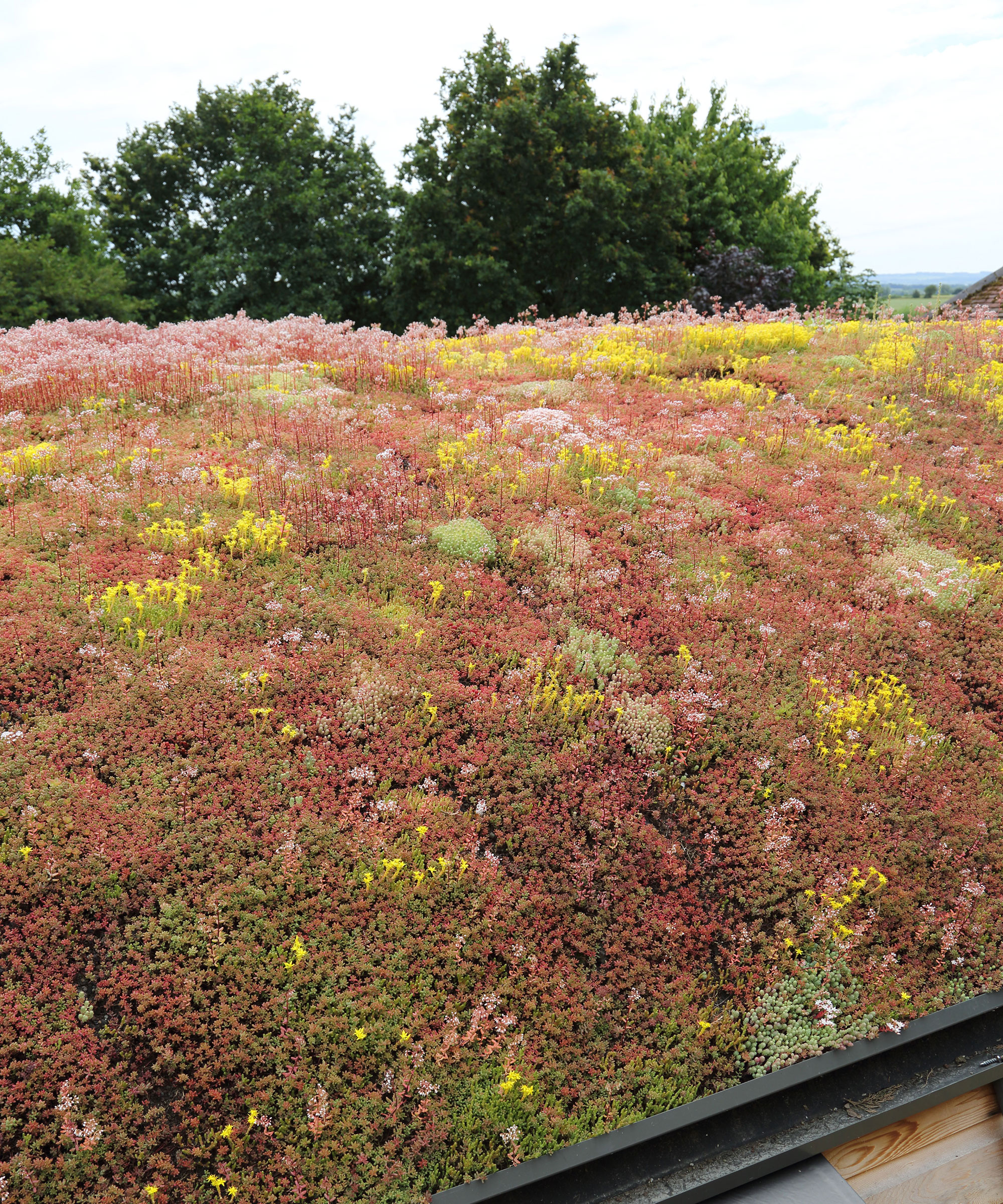
Sedum plants are ideal for creating a living roof
- Best for: Dry areas, rooftops
- Height: 6-8in
- Spread: 12in
- Hardiness: USDA 4-9
Perfect for creating a carpet of foliage for a green roof, dry gravel gardens and walls, a sedum mat will suppress weeds and bring in the wildlife.
The beautiful fleshy tiny leaves are designed to tolerate harsh conditions and are beautiful in their color variations and intricate patterns. The tiny flowers are also great for reeling in the summer pollinators.
There are many different low lying plants that come under the name sedum, from the silvery-blue tones of S. cauticola to golden succulent ‘Rubrotinctum’, some with varying degrees of winter hardiness, so check what works for your US hardiness zone.
Shop a wide range of sedum plants at Nature Hills.
10. Thymus serpyllum (creeping thyme)

Soften harder landscaping materials with pretty creeping thyme
- Best for: Patios, paving, rockeries and walls
- Height: 2in
- Spread: 12in
- Hardiness: USDA 4-9
Creeping thyme is a pretty ground-hugger, good for planting around paths and patio flooring and filling crevices. And when you step on creeping thyme it releases a wonderful fragrance. A good drought-tolerant choice, thyme spreads fast and will bring in the bees and pollinators with a froth of nectar-rich summer flowers.
Choose from variegated, golden matt and glossy-leaved varieties, with lemon or orange scent. They look great planted as a mixed chequerboard. Select Seeds recommends ‘Magic Carpet’, ‘a resilient choice for well-drained paths, rock gardens, and more.’
11. Ceratostigma (blue plumbago)

Blue plumbago is a good choice for color in late summer and fall
- Best for: Late summer/fall flowers
- Height: 10in
- Spread: 24in
- Hardiness: USDA 5-9
This could be the perfect seasonal transition plant, with blue flowers arriving at the end of the summer heat as the season changes, followed by fiery-colored foliage into fall. A creeping, fast spreading shrubby plant that’s perfect for planting in dry, sunny areas, at the front of borders, where it will spill over the edges for a soft and informal look.
A wonderful plant for attracting butterflies, you’ll be able to admire them flocking to the nectar-rich blooms. It does cope with part shade, so could also be used at the edges of tree and shrub canopies.
Blue plumbago is available at Nature Hills.
12. Japanese Pachysandra

- Best for: Shade and dry conditions
- Height: 6in
- Spread: 12in
- Hardiness: USDA 4-9
Japanese Pachysandra is a low-maintenance plant that thrives in dry shade and spreads rapidly.
It is a hardy evergreen with glossy green leaves and blooms tiny, fragrant white flowers in the spring. It would suit being planted on a slope and under trees to form a green carpet where other plants might struggle to grow. It will also inhibit weed growth.
Its fast growing habit sometimes works against it, however, and it can take some effort to keep it under control. It spreads via runners underground, and in some parts of the country will be classed as invasive, so this is something to be aware of before introducing it to your yard.
FAQs
What’s the best fast-spreading ground-cover plant for shade?
Vinca or periwinkle is a hardworking, fast-growing evergreen plant with glossy foliage and the added bonus of bright blue flowers that arrive in late spring and can continue through to fall. It’s very adaptable, coping with sun and shade, and while optimum conditions are fertile, moist woodland type soils, it can do dry areas too and is hardy in zones 4-9. In colder areas, it may die back over winter, but will reappear the following spring. Use to plant under trees and shrubs. Another shade-tolerant native is wild ginger (Asarum canadense) that spreads readily to form a ground cover, with soft, hairy heart-shaped leaves.
These fast-growing ground cover plants can be used to carpet bare soil under trees and shrubs or to fill gaps at the front of borders. Or plant them alongside paths and paved areas to create rivers of foliage and flowers that softens any hard landscaping ideas. When you plant thymes, aubretia or Mexican daisies in between paving, you are also ensuring that the seeds of unwanted volunteer plants don’t find a home.

In her years of gardening, Camilla has designed planting schemes for gardens large and small in and around London, written about plants and how to grow them, and worked on BBC gardening TV shows in the UK. She's also works as a therapeutic horticulturist, teaching growing for wellbeing and mental health.
- Rachel BullHead of Gardens